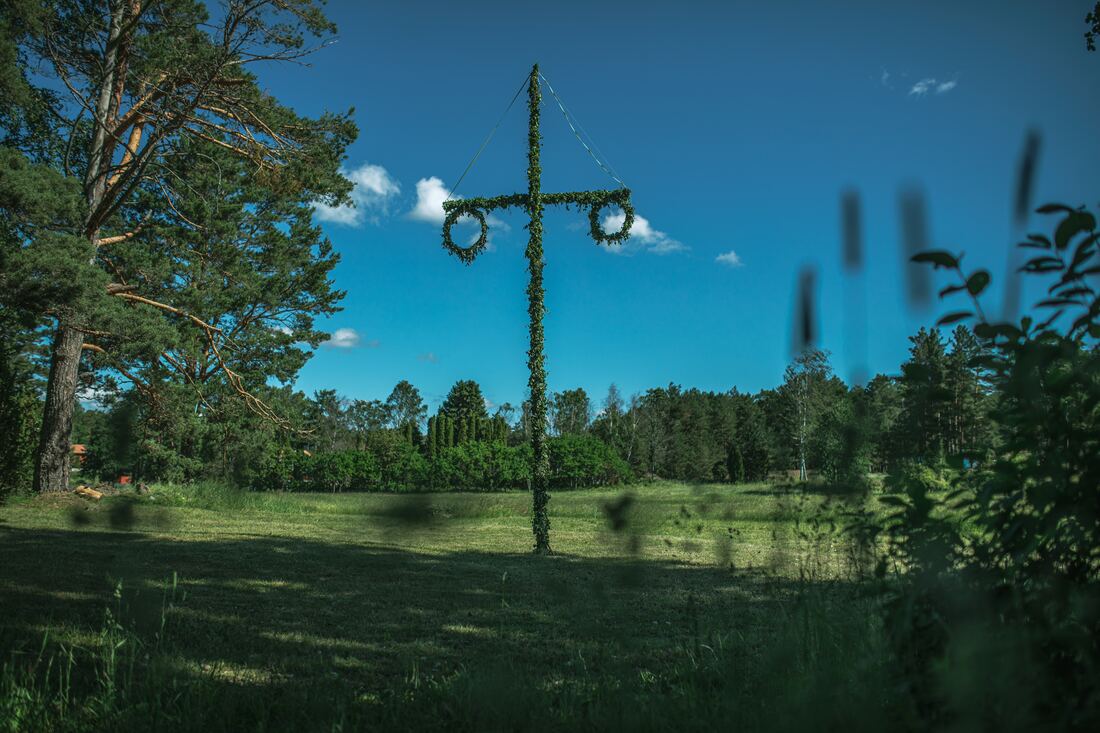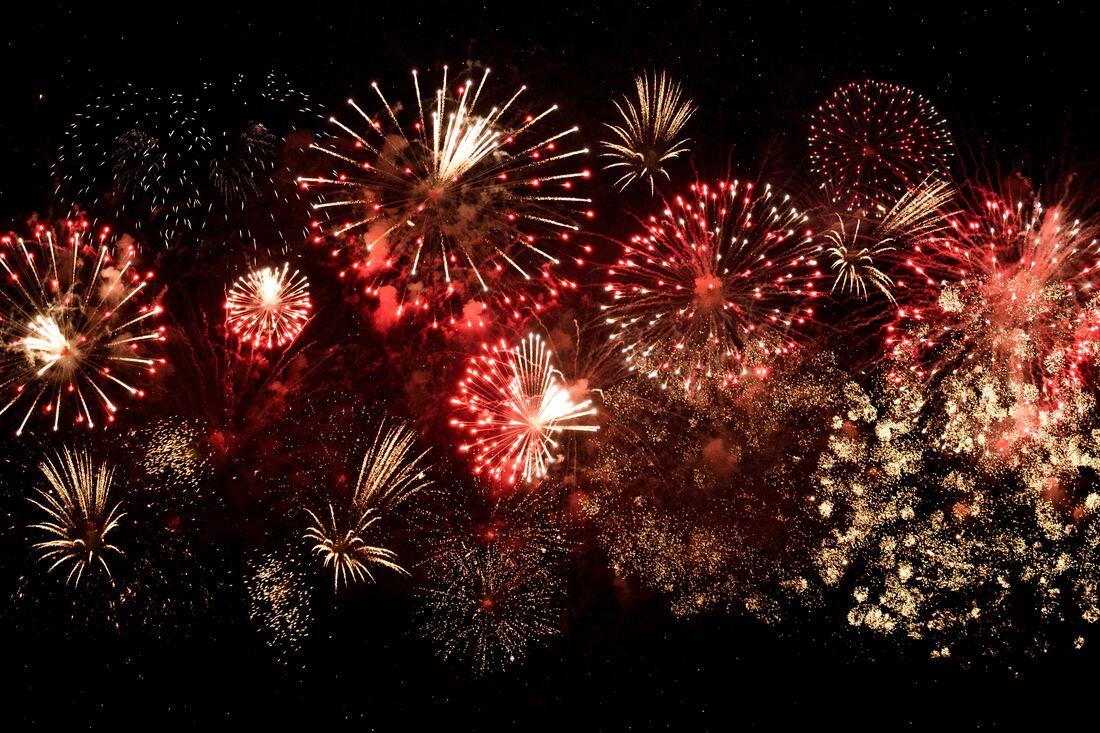|
By: A. Jabur Midsummer is the main national holiday in Sweden and Finland but is celebrated widely throughout Scandinavia. It celebrates the summer solstice (the longest day of the year) as well as the midpoint of the harvest season. This date changes every year, usually falling between the 20th – 25th of June. It also coincides and is often celebrated along with St. John’s Day, a Christian feast day that celebrates the birth of Saint John the Baptist, observed on the 24th of June.
During Midsummer, many people visit the countryside to celebrate with their families. The holiday is known for its many traditional rituals, such as dancing, lighting a bonfire, singing, drinking, and lighting fireworks. However, the festival is perhaps most known for the Maypole, a tall wooden pole covered completely with flowers, and the traditional dances and songs that are performed around it. The clothes customarily worn in the festival have also become one of its most well-known points, as the long white frocks embroidered with colorful patterns have become almost synonymous with Scandinavian traditions. Midsummer has its origins in a Pagan tradition that welcomed Summer and assured a successful harvest season- it has been celebrated for thousands of years and was associated with gods such as Ukko, the Finnish god of thunder. In the past, it was believed that loud behavior would bring luck by driving away evil spirits, which is why the period of Midsummer is associated with success, luck, and healing. Love spells were often cast during this time, as it was believed to be a magical period of good fortune. With the spread of Christianity, Midsummer began to be celebrated along with St. John’s Day. Currently, many of these originally pagan customs- such as lighting bonfires, drinking, dancing, and collecting flowers- are still core parts of the Midsummer festivities, but many new traditions have been incorporated, such as eating pickled herring with chives and sour cream and wearing beautiful handmade flower wreaths as accessories. By: A. Bonde As the last few days of the year draw near, people all over the world are getting ready to say goodbye to the past and welcome the new with joyful festivities that are reflective of the many different cultures and customs that exist in various parts of the world. The celebrations that take place at the end of the year create a diverse mix of global events that bring people together in the spirit of hope and new beginnings. These celebrations range from religious rites to colorful fireworks that illuminate the night sky.
One of the most well-known ways that people in the United States celebrate the countdown to the New Year is by watching the ball drop at Times Square, in New York City. Many people endure the freezing weather to witness the glittering ball as it makes its descent in the middle of Manhattan. There are millions of people all over the world who watch the ceremony on television as well, and it is a symbol of hope for a better future. In India, the end of the year is marked by the celebration of Diwali, also known as the Festival of Lights. Families get together to eat and give each other presents, while homes and public areas are decked out in colorful lights and decorations to celebrate the holiday. Since the celebration is a representation of the triumph of good over evil and light over darkness, it gives rise to a joyful and pleasant disposition. The New Year, also known as "Oshogatsu," is a cultural celebration that is deeply rooted in Japanese tradition. During the special lunch known as "osechi-ryori," which is comprised of a variety of symbolic delicacies, families get together to share a meal. As the clock strikes midnight, Buddhist temples ring their bells 108 times, which is a symbolic representation of the 108 earthly goals that bring human suffering during that time. Reflection, purification, and the excited prospect of a fresh start are the prevailing emotions at this moment. The spectacular fireworks display that takes place above the Sydney Harbor Bridge on New Year's Eve in Sydney, Australia, is a spectacle that not only captivates millions of people but also leaves them speechless. The fireworks explode into the night, and as they reflect off the waters of the harbor, the city is transformed into a kaleidoscope of colors. In addition to the fireworks, the celebrations include open-air concerts, dance parties, and events that are suitable for families that are held across the community. People from all over the world get together to celebrate the year that has just ended and to express their excitement about the possibility of a fresh start. This can be done through spectacular fireworks, rituals, or lively street celebrations. There is a wave of hope that rushes across the globe as midnight hits in every time zone. This wave of hope brings us all together in the common experience of saying goodbye to the old and greeting the new with open arms and hearts. By: I. Papa The best part when a year is coming to an end is all the celebrations that this “end” holds. I look forward to the decorated houses on Halloween, the red and green string lights bringing the euphoric feeling of Christmas to most homes, lighting the candles of the Menorah during Hanukkah inside Jewish homes, and the amazing celebrations on the 31st of December, where we all excitedly await the new year and what shall hold for all of us.
These remarkable celebrations each play a special part at the end of the year. Examples include: Halloween: Halloween, celebrated on the 31st of October, is a holiday that explores the spooky wonders of the world. It is an opportunity to express yourselves through creative costumes, from skeletons to Disney princesses to cartoon characters. Decorating your homes with cobwebs or even small Jacko lanterns, just to add a spooky feeling to your day-to-day life. And, of course, it is about wandering through houses, asking the families who live there for treats to put inside your plastic bucket, and when arriving home, tossing all of them on your bed and trading with friends. Thanksgiving: Although it is not frequently celebrated here in Brazil, it is mostly celebrated in the United States and Canada, Thanksgiving, celebrated on the 23rd of November, is an opportunity for you to celebrate the harvest and previous blessings of your year. You take a moment to appreciate those whom you value greatly, such as family members or cherished friends. It is a moment of gratitude for all the amazing things and people that the year has brought you. Hanukkah: A festival celebrated by Jewish individuals. Due to the ancient miracle of the oil burning a candle for eight nights consistently, Jews light 8 candles on a candle holder known as the menorah, which holds 9 candles, one intended for each night of the celebration, which lasts eight days, and one in the middle known as the “shamash”, which is used to light the other candles. The festival celebrates the rededication of the Second Temple of Jerusalem and reaffirms the ideas of Judaism. Hannukah (Chanuca), is celebrated from the 7th of December to the 15th of December. Christmas: Celebrated on the 25th of December, Christmas is a holiday dedicated to the birth of Jesus Christ, celebrated mostly by Catholic families, but it may also hold a special place for non-religious people. It’s famous for its tropes of decorated trees, and the infamous Santa Claus. It is the jolliest time of year when cities are covered in green and red lights. This celebration varies from country to country, but overall, it is a moment to be with family and enjoy the closing of the year. By: I. Krakowiak New Year’s resolutions are a tradition that dates from centuries back and remains popular among individuals, as it is an opportunity for everyone to reflect on the past year and set goals of self-improvement and growth for the new year. These resolutions can envelop a wide range of areas, such as mental and physical health, personal development, relationships, and many more.
This habit is proven to be effective and good for your overall wellness, as it creates a phenomenon called the “fresh start effect”, explained by livescience.com: “it can act as a ‘temporal landmark’ that gives people a renewed commitment to goals.” Here are some ideas for resolutions:
|
Categories
All
Archives
June 2024
|





